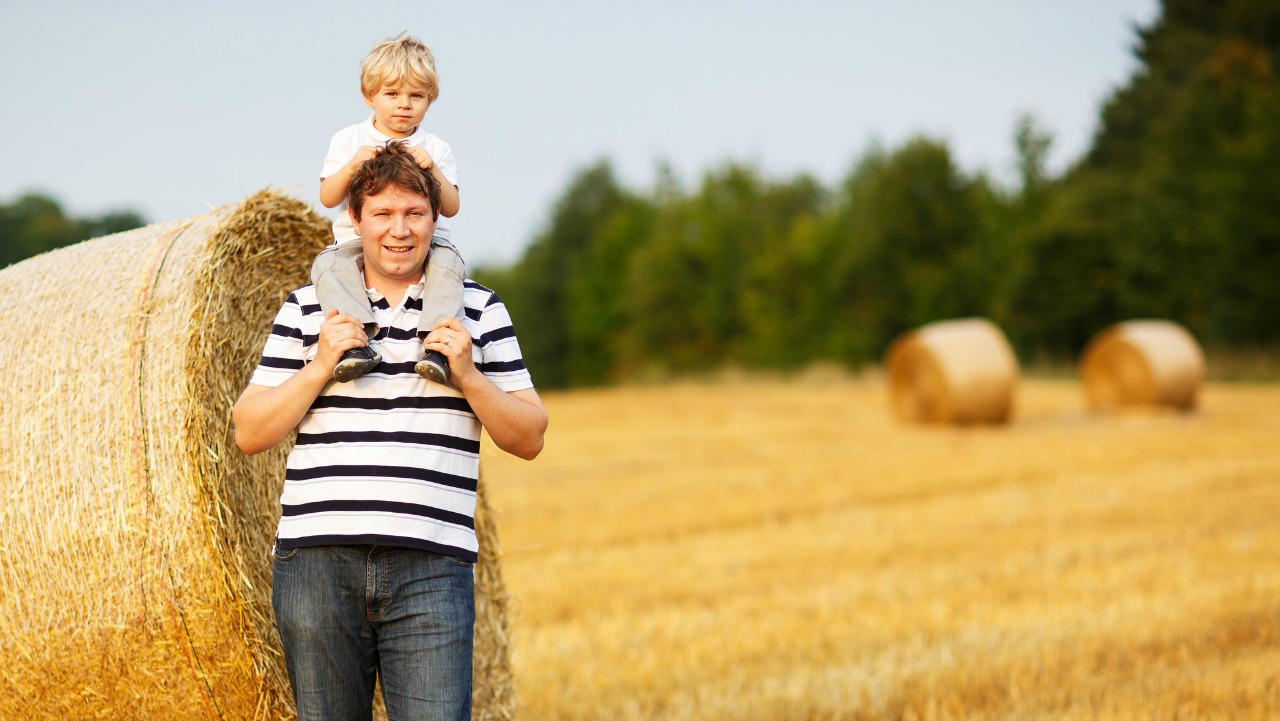
There's plenty that family farmers can do to keep themselves safe on the job-and it starts with taking a new look at old habits, says UAlberta farm safety expert Don Voaklander.
Alberta farmers are being urged to think differently about operational safety by shedding old on-the-job habits.
Approaching daily work with a shift in thinking could go a long way to preventing unnecessary injuries on the family farm, said Don Voaklander, a farm safety expert from the University of Alberta's School of Public Health.
"Old habits are often poor habits," said Voaklander, who has tracked farm safety for 20 years. "It's wise to have that double-think before before you do something that you've done 10 times before, but that is actually quite dangerous. Are there some safety measures that should be in place first?"
He noted that a recent Farm Credit Canada poll showed that 80 per cent of farmers felt their biggest barrier to on-the-job safety was simply sticking to old habits.
In Canada, farming is the fourth most dangerous occupation in terms of fatal injuries, with an average of 101 people dying in agriculture-related accidents every year, according to data from Canadian Agricultural Injury Reporting and researched by the U of A's Injury Prevention Centre.
In addition, farmers are five times more likely to die through work-related accidents than any other industry. And, said Voaklander, the child fatality rate on Alberta farms is slowly climbing-going against the national trend. Between 1990 and 2013, child fatalities rose from about eight per 100,000 farm children to about 15 per 100,000.
Small-farm workers, often exempt from existing health and safety regulations, are especially vulnerable to injury, he added. As sole proprietors of their operations without employees or payrolls, they aren't required to have worker's compensation or occupational health and safety plans, Voaklander said.
"There are uniform occupational health and safety rules that apply to farms and employees across the country, and other factors such as guarding equipment on machinery that has gotten better over the past 25 years. But at the end of the day, the people getting hurt on farms are family farmers, and we still haven't addressed that issue."
But they can take action on their own, he added, urging farmers to check out the Canadian Agricultural Safety Association for safety information. "There are a lot of best practices out there for farm safety, so take advantage of that."
Just in time for Canadian Agriculture Farm Safety Week March 12-18, Voaklander offers these suggestions for improving safety on the farm:
1. Power up tractor safety
Retrofit old tractors with protective structures that prevent rollover. "The number one killer is tractor rollovers," Voaklander said. There have been about 21 deaths per year over the last 22 years. There is a bit of cost involved in sprucing up an old tractor before it is traded in for a newer, safer model, but in the meantime, "farmers are great fabricators" and can often construct something themselves, using plans available on the Internet.
2. Don't mix young kids and farm equipment
Keep children under the age of 10 out of the farmyard when using heavy machinery. Of the 10 per cent of youngsters injured on the farm on average each year, almost all of them are struck by heavy equipment, Voaklander said. Also avoid letting them ride along as extra passengers in tractor and combine cabs that have no seating for more than one or two people.
3. Match the child to the chores
Make sure kids are up to the jobs they are assigned around the farm. Voaklander recommends checking out the North American Guidelines for Children's Agricultural Tasks, which lists 75 guidelines jointly developed by farmers and child development specialists. Rather than age, the guidelines are based on factors like a child's comfort level and physical size. "You can look at your child's capabilities and match them to jobs they should be able to do with only minimal risk."
4. Keep in touch on the back forty
Because farmers sometimes work alone and in isolated areas, it's a good idea to have a way to stay in touch and check in with someone on a regular basis, using cellphones or a walkie-talkie system, Voaklander said. "Regular communication is especially important for older workers who might have health issues."